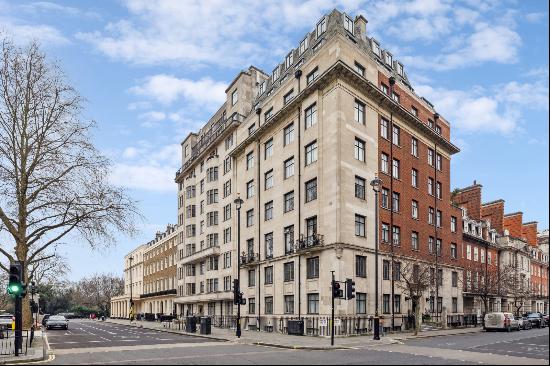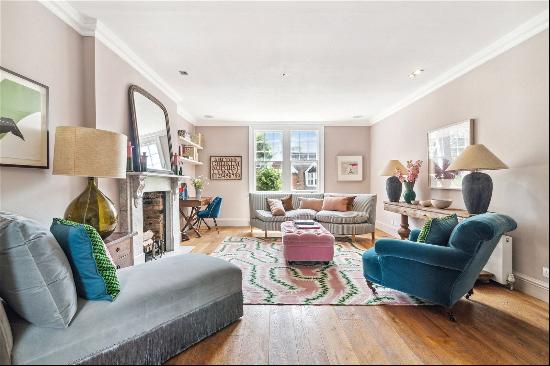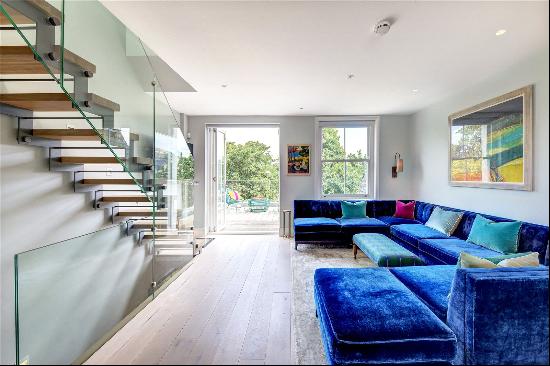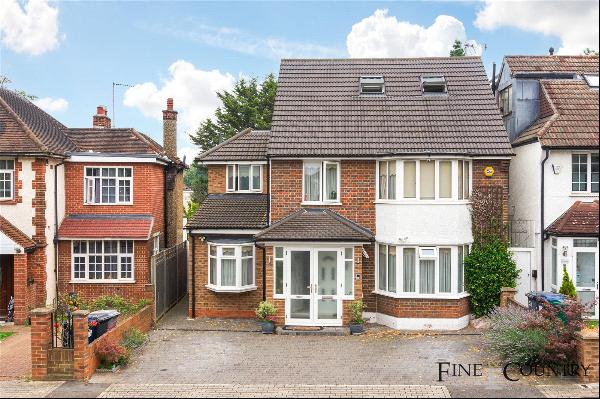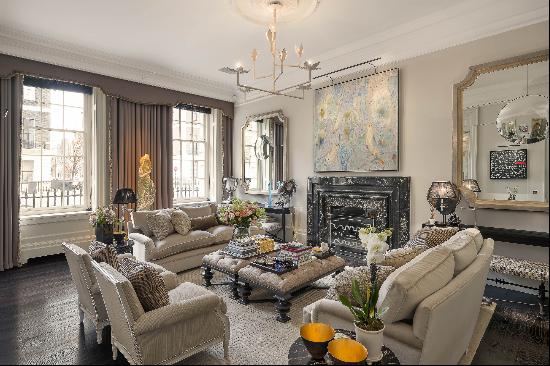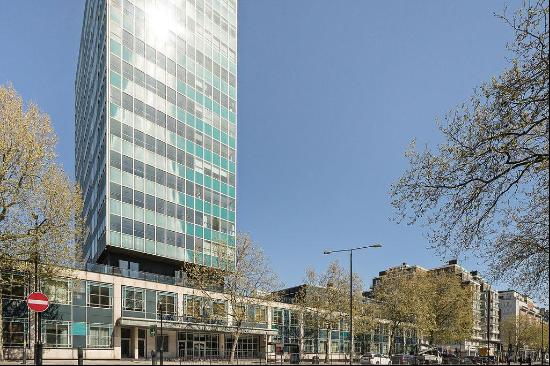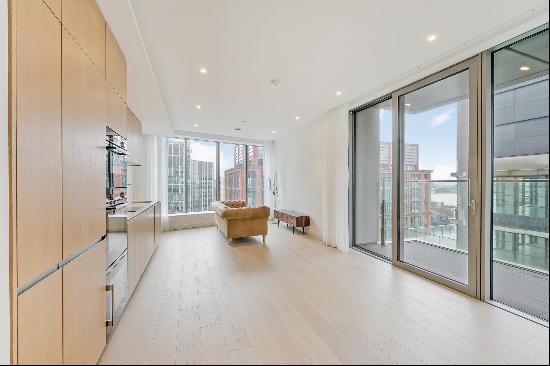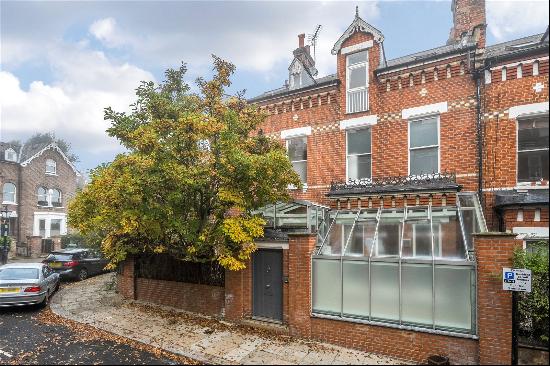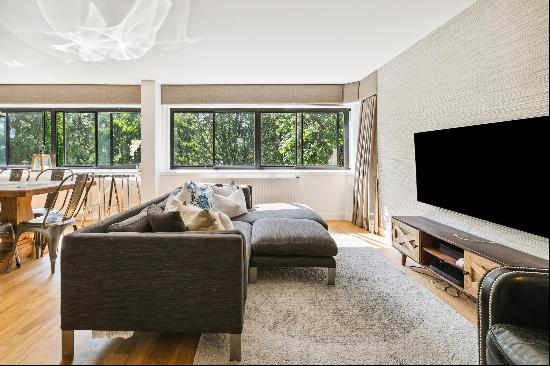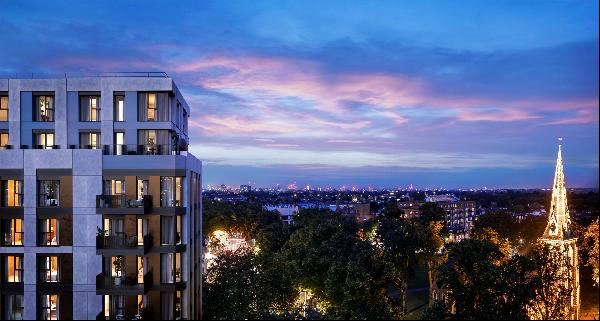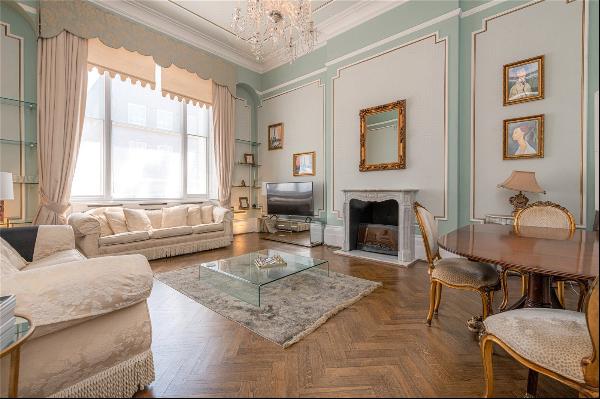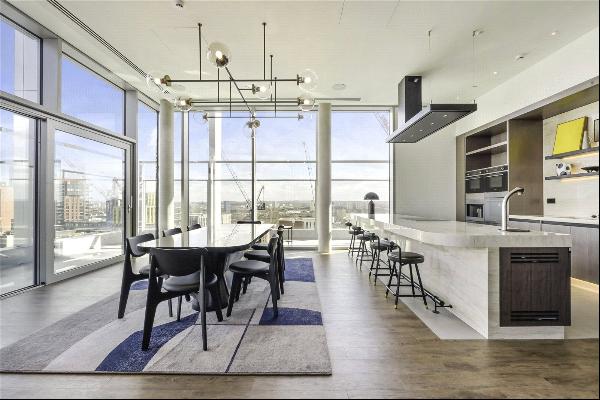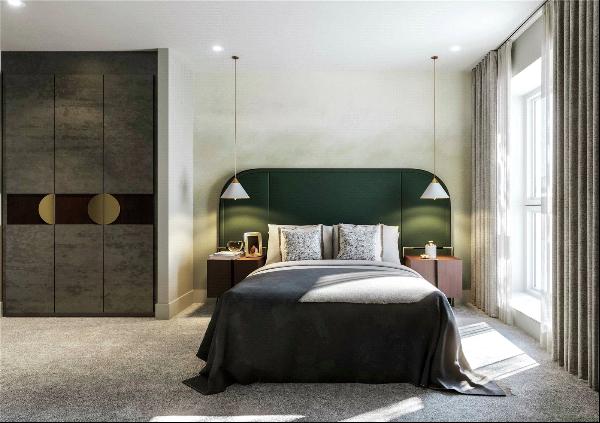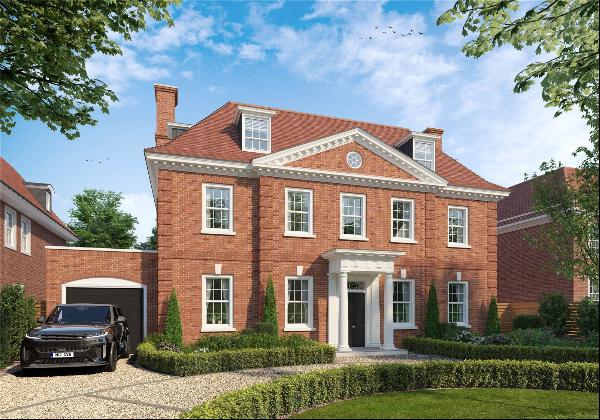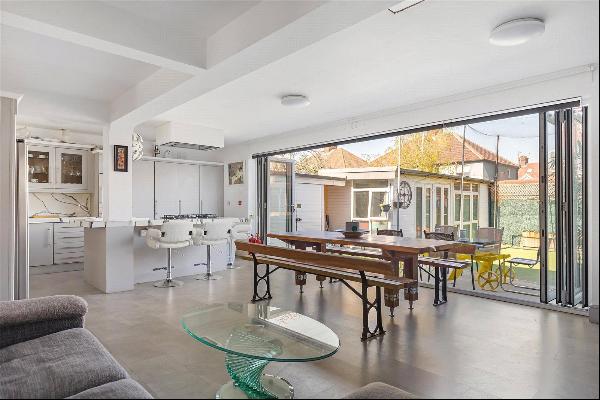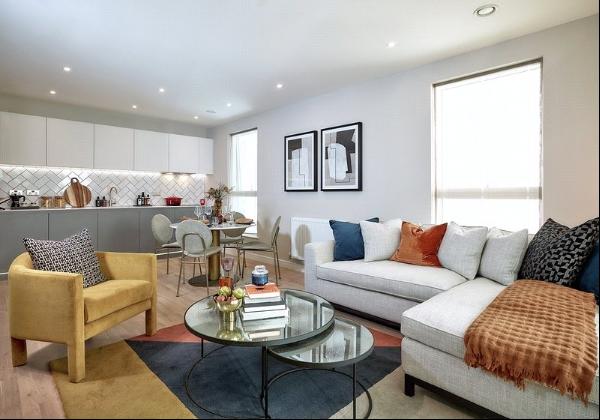
By Edwin Heathcote
If you have ever looked down from a high-rise at the city below, you will be familiar with the strange, bleak, uninviting roofscape. The land at ground level might be prime real estate yet the flat roofs of buildings are cluttered with the detritus of air-conditioning ducts and window-cleaning gear. It is a mess and it is wasted space.
Architects and developers are looking at these (literally) overlooked opportunities and attempting to build dwellings in the sky, piggybacking on to existing structures. This is not a question of rooftop extensions; this is the construction of discreet dwellings atop buildings, which make a new landscape.
The creation of high-level streetscapes is nothing new. I have seen an odd, shingled beach-house atop an East Village block (corner of 1st Avenue and 1st Street) in New York and there are entire suburban houses on top of some buildings. But the housing crisis in many cities is making attempts to squeeze extra inches from existing stock more urgent.
The slickest example is surely Shigeru Ban’s rooftop addition to an 1881 cast-iron-framed block in Tribeca. Sitting atop a beautiful white-painted building on the corner of Broadway and Franklin, the Japanese architect’s minimal box houses a pair of penthouses, which are set back and use the flat roof as terraces.
The whole building was redeveloped so there is a continuity between the interiors downstairs and those on the roof. Far more interesting are the buildings where the rooftop addition has nothing at all to do with what goes on underneath. Dutch architects MVRDV’s Didden Village in Rotterdam, a bright blue house on top of a historic brick house (pictured above), started this trend in 2006.
Sean Griffiths of Modern Architect is currently augmenting his own masterwork, the brilliant Blue House in east London’s Bethnal Green, which he designed with his former practice FAT. The original house was already a collage of various architectures in a kind of comic book cut-out form, so the roofscape of Monopoly houses under construction seems appropriate. The new design continues the tongue-in-cheek attitude to contemporary architecture of the rest of the building.

Two other London projects reveal the increasing popularity of building upwards. David Kohn’s intriguing addition of a three-bedroom apartment to a Victorian office building in Covent Garden for developer Crispin Kelly continues the brick language but plays with the form. Kohn has articulated a series of room shapes in the plan so that the extension emerges as a discreet and expressive volume, which both keys off and contrasts with the rational, industrial building below.

In Ransome’s Dock in Battersea, 6a Architects has developed five rooftop houses for Kelly’s company, Baylight Properties. The Sky Houses proposal resembles a sawtooth industrial roof, which would suit this one-time industrial, Thames-side wharf. Each tooth is a separate, double-storey apartment with a huge internal living volume on its upper storey and one wall made entirely of glass. It looks like a cross between a factory and an art school, a neat notion as the rapidly-rising new Royal College of Art by Herzog & De Meuron, and Foster + Partners’ own glass-fronted office, are next door.
Very different are the “parasitic” boxes proposed above existing buildings in Paris by architect Stephane Malka. The idea is for infill on stilts, plugging gaps in the urban fabric with boxes of glass and steel. Part outrageous PR and part sensible suggestion, the proposal for a constellation of low-cost homes appears to have been too much for Paris, even though it was a response to a loosening of regulation intended to make it easier to build in the French capital.

WARchitect’s impossibly slender-profiled glass and timber box atop an apartment building in Bangkok’s Chatuchak district is an elegant addition to the genre, something between a mid-century modernist villa and a tropical beach house. The formerly mundane roof becomes a broad garden with trees filtering views of the city.
The upsides of building on top of existing buildings are clear: good locations where it would otherwise be impossible to build; the avoidance of the difficulties of demolition and groundwork; views over the city and a bigger sky. Occasionally there is a burst of enthusiasm from developers or architects to suggest this is a solution to the housing problem. But it is never that simple.
Although most decently built structures can support another storey, arranging the access and escapes, the structural engineering and services can be tricky. More problematic still might be the neighbours.

The UK’s formidably complex regulations including “ancient lights”, which give rights to light to existing windows, is one obstacle which often blocks development, while sensitivities around overlooking have stymied many possibilities. In New York, the system of air rights, which allows developers to buy space above an existing building, has been used by residents attempting to prevent new developments that would overshadow their own existing apartment building or block views.
Nevertheless one architect, Arpad Baksa, virtually built a career on rooftops. Often commissioned by top-floor loft dwellers to build something bursting through the roof, his more luxurious additions include swimming pools nestled amid water towers in New York.
The real pioneers of rooftop building are the self-builders of the favelas who build up as soon as they have acquired a little more money or as their family expands. Perhaps inspired by their ad hoc invention, the Mexican architect Rozana Montiel designed the wonderful Un Cuarto Mas. The idea was to create an extra room on the rooftops of new developments in Temixco, Morelos in Mexico, to provide privacy or escape, particularly for women who might be subject to abuse.
These rooftop rooms provide literal and metaphorical shelter at a low budget using easily available local materials. Their lightweight nature makes them easy to mount on existing structures but their distinctive aesthetic provides a new, more interesting profile to the acres of flat-roofed, identikit apartment buildings.
This is a solution to a very specific issue. But, in a way, all rooftop buildings are exactly that: super-specialised interventions into very particular circumstances, so one solution will rarely be scalable. It is the scenario in which architects really earn their living, where invention and ideas can make new worlds above the rooftops.
Photographs: Rob ‘t Hart; Courtesy of Modern Architect; David Kohn Architects; Stephane Malka; Rungkit Charoenwat



